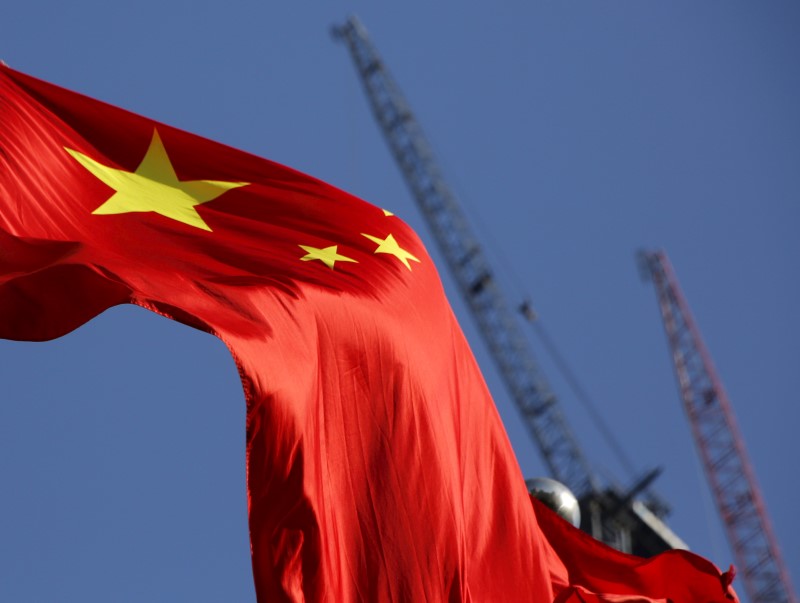(Bloomberg) -- China’s economic rebound continued in March, as factory activities accelerated amid strong global orders and recovering domestic demand, leading to a surge in producer prices.
That’s the outlook of an aggregate index combining eight early indicators tracked by Bloomberg, which remained unchanged from February in strong expansionary territory.
A boom in exports across Asia looks set to continue and will support industrial output, with the global shortage of chips helping gains in March. South Korea’s exports rose 12.5% in the first 20 days of the month from the same period last year, driven by higher demand for chips and cars.
Strong factory activity momentum is also partly reflected by the jump in producer prices, with Bloomberg’s tracker showing prices surging 5% in March from a year earlier, the fastest increase since December 2017. This could add further pressure to the global inflation outlook, as demand for China-made goods is set to climb after the U.S. rolled out the latest $1.9 trillion stimulus.
Read more: A $60 Billion U.S. Stimulus Windfall Is Heading China’s Way
The pace of the housing market’s expansion slowed in March, after months of government effort to crack down on risks in the debt-laden sector. Year-on-year housing sales growth in the four largest cities moderated in March from the previous month.
Activity picked up at China’s small and medium-sized enterprises, especially those in the manufacturing sector, a survey of over 500 SMEs by Standard Chartered (OTC:SCBFF) Plc showed. Their index measuring SMEs’ confidence climbed to 53.6 in March, the highest level in six months.
“SME activity accelerated as businesses resumed after the Lunar New Year holidays and Covid-19 containment measures were gradually eased,” Shen Lan and Ding Shuang, economists at Standard Chartered, wrote in a report. Export-oriented businesses continued to outperform their peers focusing on the domestic market, as further improvement in global demand led to a faster increase in new orders, they wrote.
What Bloomberg Economics Says...
Exports soared 60.6% in the first two months of 2021 from a year earlier. The outsize increase largely reflected a low base, but underlying momentum is strong.
-- Chang Shu, chief Asia economist
For the full report, click here.
The onshore stock market pulled back in March from it’s multi-year high in February, as worries over tighter monetary policy took hold, displacing earlier optimism about economic recovery.
Car sales remained robust, although year-on-year growth slowed from February. The figures are boosted by the low base last year due to the pandemic outbreak.
Early Indicators
Bloomberg Economics generates the overall activity reading by aggregating a three-month weighted average of the monthly changes of eight indicators, which are based on business surveys or market prices.
- Major onshore stocks - CSI 300 index of A-share stocks listed in Shanghai or Shenzhen (through market close on 25th of the month)
- Total floor area of home sales in China’s four Tier-1 cities (Beijing, Shanghai, Guangzhou and Shenzhen)
- Inventory of steel rebar, used for reinforcing in construction (in 10,000 metric tons). Falling inventory is a sign of rising demand
- Copper prices - Spot price for refined copper in Shanghai market (yuan/metric ton)
- South Korean exports - South Korean exports in the first 20 days of each month (year-on-year change)
- Factory inflation tracker - Bloomberg Economics created tracker for Chinese producer prices (year-on-year change)
- Small and medium-sized business confidence - Survey of companies conducted by Standard Chartered Plc
- Passenger car sales - Monthly result calculated from the weekly average sales data released by the China Passenger Car Association
©2021 Bloomberg L.P.
